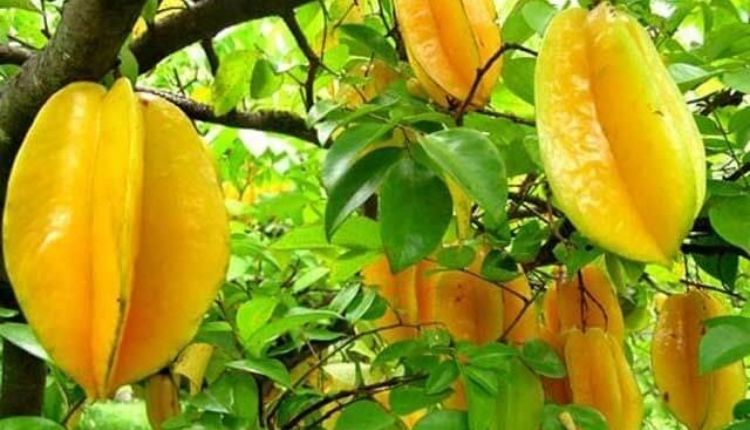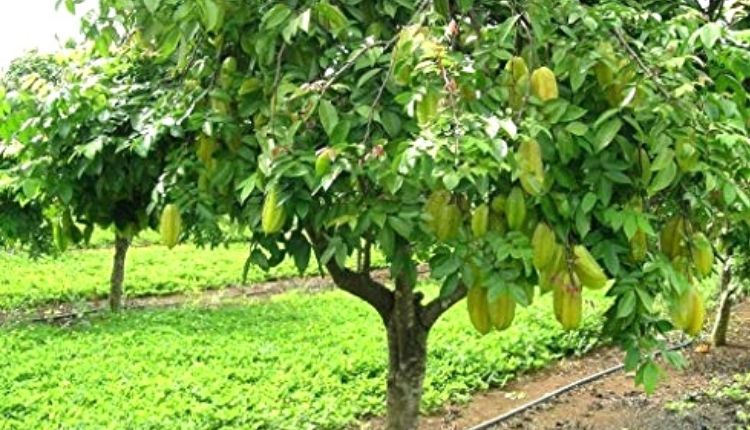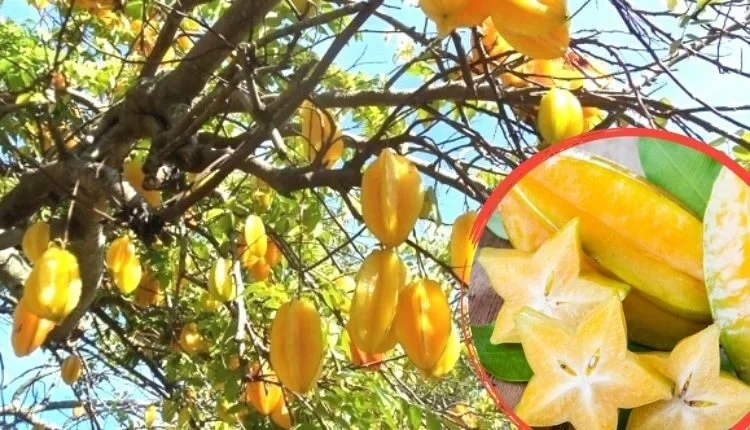Carambola (Kamarkha) Farming: If you want to earn for the whole year, then do the gardening of this beautiful fruit
If there is plenty of sunshine throughout the year, then the yield of Carambola (Kamarkha) is always available
Kamarkha or Amarakh or Carambola is a unique medicinal fruit. Its shape is pentagonal like stars, hence it is also called star fruit. If Kamarkha gets enough sunlight or heat throughout the year, then fruits and flowers always grow on it. With this, the farmers cultivating Kamarkha can get income throughout the year. Due to the seasonal effect, in South India, where fruits come in the months of January and September-October, in North India, during November to March, good yield of Kamarkha is obtained.
Kamarkha tree or farming is a multi-year tree. Its height ranges from 5 to 10 meters. The branches of Kamarkha are dense and beautiful and the leaves remain green throughout the year. The unripe fruit is green in color and turns yellow when ripe. The fruit of Kamarkha is 7.5 to 10 cm long. Up to 100 kg of fruits are obtained annually from the mature tree of Kamarkha. The fruits of Kamarkha are aromatic, pulpy and juicy. Its taste is both sour and sweet. Both varieties are also used in making medicines. Chutneys, pickles, juices and jams are made from kamarkha.

All types of amino acids necessary for human health are found in the fruits of Kamarkha. That is why medicines for many diseases are made from it. Kamarkha contains good amount of vitamin ‘A’, ‘B’ and ‘C’ as well as phosphorus, zinc, calcium, magnesium, sodium, potassium and iron. It contains high amounts of antioxidanic and polyphenolic compounds such as quercetin and gallic acid, alanine, lysine and sarin in the fruit of kamarkha.
In India, kamarkha is cultivated in the states of Orissa, Gujarat, Tamil Nadu, Karnataka, Maharashtra, Uttar Pradesh and Madhya Pradesh etc. Apart from the Indian subcontinent, kamarkha is also cultivated in Sri Lanka, Malaysia, Indonesia, Philippines, Peru, Colombia, Trinidad, Ecuador, Guyana, Brazil and the United States. Jam and jelly of Kamarkha is very popular in foreign countries. In India, it is mostly eaten raw. Its vegetables are also well liked. It tastes amazing with sweet potato chaat. There is a lot of demand for it in the domestic and foreign market, that is why the price is also good in the market.
Features of cultivation of kamarkha farming
Improved Varieties of Kamarkha: The Kamarkha tree is unique in that it does not have any specific species or variety. Its varieties are identified on the basis of its sour and sweet taste. In this way, there are only two varieties of kamarkha – sour and sweet.
Soil and Climate: Warm climate is best suited for the cultivation of Kamarkha. For this the pH value of the soil should be between 5.5 to 6.5. Nutrient rich alluvial soil is suitable for good yield of Kamarkha. There should be proper arrangement of drainage in its garden. Kamarkha tree can be easily grown in areas up to an altitude of 1200 meters above sea level. But its yield is affected in frost prone areas.
How to make Kamarkha plant? Before transplanting Kamarkha plants, they have to be prepared in the nursery. They can be prepared by almost all the popular methods. Such as gift pen, pressing, shield glasses, forkert glasses and armpits etc. January is the best time for pressure and glasses methods.
Field preparation and transplanting: Before planting Kamarkha, the field should be well plowed two to three times. The soil should be leveled by applying a pata after making the field free from weeds. For transplanting plants in the field a month before rainy season, pits should be dug in such a way that the distance between them is 8×8 meters. At the time of transplanting, the pits should be filled by making a mixture of 5 kg of manure and soil and should also make a tree bag. Regular cleaning and weeding of these bags should be done. This improves growth of the plant.
Irrigation of Kamarkha plants: After transplanting, light irrigation of Kamarkha should be done. Irrigation is not required during the rainy season. But it is important to protect the trees from water logging. After this, irrigation should be done on 15 days in summer and at month interval in winter or as required.
Manure and Fertilizer: Since the Kamarkha tree is a multi-year plant and produces fruits throughout the year, it also needs nutrients throughout the year. That is why it is necessary to give 100 kg of decomposed cow dung in a year for better yield of each tree of Kamarkha. If only this is done, then the Kamarkha tree does not need any chemical fertilizer. However, chemical fertilizers can be used according to the soil test report.

Harvesting the fruit of Kamarkha: The colour of the fruit of Kamarkha changes from green to yellow on ripening. Its ripe fruits should be plucked carefully, so as not to harm it. After plucking, Kamarkha should be washed thoroughly with water, cleaned and sent to the market. It gives good prices.
Consumption of kamarkha farming is unmatched for health
According to experts in Food Science and Post-harvest Technology of ICAR- IARI (Indian Institute of Agricultural Research), New Delhi, the minerals and vitamins found in kamarkha are very important and useful for health. They give us long life, energy and beauty. It is beneficial in diseases like bladder and kidney problems, relief from fever, problems related to bile and digestion, flatulence and diarrhoea. Consumption of kamarkha provides ample amount of vitamin ‘B’ complex. It makes women’s hair strong and shiny.
Antimicrobial elements found in kamarkha are beneficial in the treatment of eczema. Consumption of kamarkha also helps in weight loss. Consumption of kamarkha increases immunity. It increases milk in women after delivery and delays the resumption of menstruation. Consumption of kamarkha is also very beneficial in the prevention of diabetes. Copper is also found in kamarkha, which improves heart health by reducing cholesterol levels. This reduces the risk of heart attack or coronary heart disease and keeps blood pressure balanced.
Taking a glass of Kamarkha juice mixed with sugar in the morning ends the problem of loss of appetite. Kamarkha is also very beneficial in the prevention of phlegm, bile and blood disorders in smokers. For its treatment, grind kamarkha and cook it on low flame till it becomes one-fourth. Then after cooling, add rock salt and roasted coriander and cumin etc. to it according to taste. Consuming 7 to 10 grams of this in the morning and evening also eliminates fatigue and gives a feeling of being energetic. Consumption of kamarkha increases bone density and helps in preventing osteoporosis.
Caution: Caramboxin and oxalic acid are also found in kamarkha which can prove to be harmful for people with kidney or kidney related diseases. Such patients may complain of hiccups, vomiting, nausea, mental confusion, etc.
Contact us: If farmers want to share information or experiences related to farming with us, then they can do this by calling us on the phone number 9599273766 or by writing an email to [email protected] or by sending your recording. Through Kisan of India, we will convey your message to the people, because we believe that if the farmers are advanced then the country is happy.
You can connect with Kisan of India on Facebook, Twitter, and Whatsapp and Subscribe to our YouTube channel.



